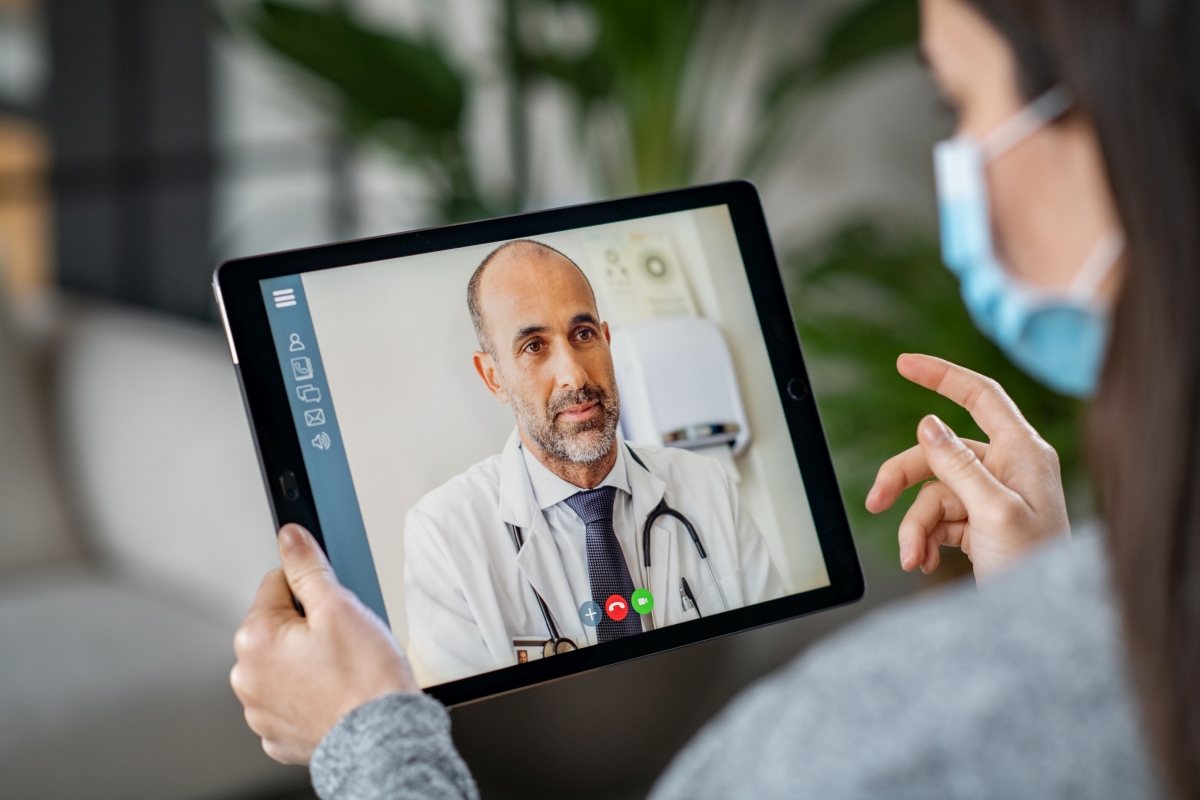Exploring the Perks and Obstacles of Teledoctors in Modern Healthcare
As the healthcare landscape develops, teledoctors have actually emerged as a pivotal part in linking voids in clinical gain access to and performance. How can the health care sector balance these advantages with the fundamental difficulties?
Expanding Access to Treatment
Telemedicine has actually become a pivotal development in modern-day healthcare, substantially increasing accessibility to look after varied populaces. By leveraging electronic technology, teledoctors have actually changed the typical health care delivery version, making it possible for individuals in remote or underserved locations to obtain prompt medical appointment. This evolution is especially advantageous for people residing in rural neighborhoods, where the scarcity of healthcare centers and specialists commonly results in postponed or poor therapy.
Teledoctors are critical in connecting the void developed by geographical obstacles. With digital appointments, individuals can access a wide variety of health care solutions without the need for comprehensive travel. This is especially beneficial for those with mobility concerns or persistent conditions calling for constant medical focus. Moreover, telemedicine enhances connection of care by enabling routine follow-ups and surveillance, thereby enhancing patient outcomes.
The integration of teledoctors right into health care systems additionally supports the management of public wellness dilemmas by assisting in fast response and triage. During pandemics, for example, online examinations decrease the problem on physical health care centers, decreasing exposure dangers for both individuals and doctor. As telemedicine remains to develop, it guarantees to improve the landscape of healthcare availability, making it more effective and comprehensive.
Cost-Effectiveness of Teledoctors
The cost-effectiveness of teledoctors is a substantial factor driving their widespread adoption in health care systems. By lowering the demand for physical infrastructure and in-person check outs, teledoctors use an even more budget friendly alternative to conventional health care distribution.
In addition, teledoctors help with a much more effective use healthcare sources by decreasing unnecessary emergency clinic check outs and medical facility admissions. Clients can access timely consultations for minor ailments or follow-up treatment, which aids to alleviate the burden on overstretched medical care centers. This performance not just causes cost savings for doctor but also reduces the financial strain on patients who could or else face pricey hospital costs.
In addition, teledoctors can aid in taking care of chronic illness a lot more successfully by offering constant surveillance and prompt interventions. This proactive strategy can stop problems, thereby reducing long-term therapy expenses. Generally, teledoctors present a viable remedy to the rising expenses of healthcare, while keeping high quality treatment shipment.
Enhancing Patient Ease
While cost-effectiveness plays a crucial function in the surge of teledoctors, improving patient ease stands as one more compelling advantage of this healthcare version. With the combination of teledoctors, clients can bypass the commonly taxing process of scheduling and attending in-person appointments. This model gets rid of the requirement for traveling, lowering time invested en route and waiting rooms, thus supplying considerable time cost savings for individuals. Especially for those with mobility problems or staying in remote look at here now areas, teledoctors supply an important web link to healthcare that might otherwise be hard to reach.
Additionally, teledoctors offer versatile organizing, enabling people to prepare assessments sometimes that ideal match their individual and expert dedications. This flexibility is vital for people balancing demanding job routines or family obligations, making certain that medical care can be integrated seamlessly into their lives. In addition, the capacity to accessibility physician from the comfort of one's home can lead to raised person involvement and adherence to treatment plans, as the barriers to seeking care are decreased.
The ease provided by teledoctors not just enhances the client experience however also contributes to an extra reliable and responsive health care delivery system, eventually sustaining much better health and wellness end results.
Resolving Privacy Worries
Amidst the expanding fostering of teledoctors, personal privacy worries arise as a substantial consideration. As health care progressively depends on digital platforms, ensuring the discretion of person details becomes critical. The digitization of medical documents and the usage of telecommunication innovations require robust safety and security measures to safeguard sensitive data from unapproved gain access to and breaches.
Healthcare companies should follow stringent policies, such as the Medical Insurance Mobility and Liability Act (HIPAA) in the United States, which establishes nationwide standards for protecting clinical info. Compliance with such laws is vital in preserving patient count on and ensuring their information is managed properly. Encryption of information, protected interaction channels, and normal audits are a few of the measures that can be applied to improve information protection.
Cybersecurity dangers are evolving, and healthcare companies have to remain vigilant to new susceptabilities. In addition, educating both clients and like this health care carriers about best techniques in data privacy is vital.
As teledoctors end up being extra indispensable to healthcare delivery, attending to personal privacy concerns is vital to make sure both the efficiency and reliability of these solutions.

Navigating the Digital Divide
Connecting the electronic divide is a critical challenge in the extensive adoption of teledoctors. teledoctors. This divide includes variations in accessibility to electronic technology, specifically amongst rural, low-income, and elderly populations. These groups usually do not have the needed devices, dependable web connectivity, or digital literacy required for effective participation in telehealth solutions. Subsequently, the advantages of teledoctors-- such as raised accessibility and convenience-- remain inaccessible for several people that can most take advantage of them.
Furthermore, campaigns to fund modern technology for low-income families can play a critical duty in guaranteeing fair access. Medical care companies and neighborhood companies must collaborate to use electronic literacy programs, equipping people to browse telehealth platforms confidently.

Conclusion
The assimilation of teledoctors into contemporary healthcare uses substantial benefits, consisting of enhanced accessibility to care, cost-effectiveness, and enhanced individual convenience. Nevertheless, obstacles such as privacy worries, the electronic divide, and cybersecurity threats need to be resolved to optimize these advantages. By executing durable information protection steps, boosting electronic proficiency, this hyperlink and ensuring safe technical framework, the potential of teledoctors can be completely recognized, advertising fair healthcare delivery and transforming the health care experience for all individuals.
